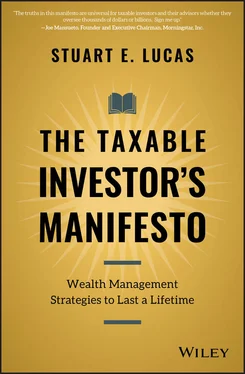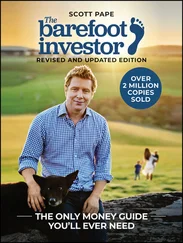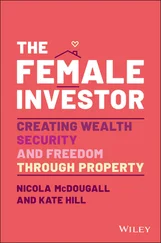Taxable investors should evaluate the symmetry of risk, magnitude of profit, probability of winning, and profit retention rates from their unique perspective.
Given all their differences, managing taxable and tax-exempt portfolios using the same investment theories, the same analysis, the same structures, the same metrics of performance, is not acceptable. We taxable investors need to think and act differently than tax-exempt investors, and our advisors should too.
The character of profit determines the rate at which it is taxed and when it is taxed. It's important to understand the differences.
For taxable investors, the more successful an investment becomes, the more expensive it is to sell and the harder it is to replace. Over time, each buy and sell decision becomes more and more important.
Costs also affect taxable profits. Many investment funds are structurally more attractive to tax-exempt investors than to taxable ones. Avoid them and focus on a smaller and more sensible set of options.
1 1For a detailed analysis of the after-fee and after-tax returns of index funds, mutual funds, hedge funds, and private equity funds review, see Stuart Lucas and Alejandro Sanz, “The 50% Rule: Keep More Profit in Your Wallet,” Journal of Wealth Management 20 (no.2, Fall 2017).
2 2This isn't entirely true. In their prospectuses – but rarely transferred into their marketing material – mutual funds are required to provide estimates of after-tax performance. This level of reporting is not required, and rarely calculated by Exchange Traded Funds, alternative investments like hedge funds and private equity funds, or separately managed accounts. But even for mutual funds this information is not widely circulated or analyzed.
3 3Individuals may only deduct a maximum of $3,000 of final net short-term or long-term investment losses against other types of income.
CHAPTER TWO Diversify at the Right Time and in the Right Way
Most people think of “diversification” as a financial investment strategy – what percent of stocks, bonds, hedge funds, private equity, venture capital, and real assets should comprise an investment portfolio? But before any of us has the opportunity to think about this aspect of diversification, first we have to accumulate wealth. That almost always requires long-term, concentrated investments of effort and capital. This chapter explains how and when to turn concentrated wealth accumulation into cash for potential reinvestment into that diversified portfolio of financial assets.
Most talented, ambitious people start their professional lives with minimal assets, often some debt, minimal earnings, and lots of earning potential. You can think of that earning potential as a large but intangible asset. Over time that intangible asset changes form. Earning potential converts into actual earnings that can be used to eliminate debts and pay living costs. Whatever earnings are left over convert into savings – a tangible asset.
In addition to receiving salaries, some people are compensated with concentrated ownership in one company through stock, restricted stock, and stock options. Equity in this form can offer great benefits for entrepreneurs, leaders, and managers in growing companies, but it isn't very liquid, and its value will follow the company's fortunes. In other words, it's risky.
In professions like dentistry, teaching, and many others, where reasonably predictable careers provide reasonably predictable cash flow but little opportunity to “equitize” professional skill, saving cash earnings is the only way to build financial assets and to diversify personal balance sheets. The earlier the saving process begins, the longer the savings can compound and the larger they can grow. Professional athletes, actors, authors, and others whose earnings are lumpy should save particularly heavily during high earning periods because their future earning potential is unpredictable.
Regardless of career path, at early career stages, savings should be earmarked largely for growth in a diversified portfolio of equities. A significant chunk of that savings can and should benefit from being locked into tax-advantaged retirement plans. In a traditional retirement plan, earnings are contributed pretax. Within the plan assets grow tax-free, sometimes for many decades. Only when assets are withdrawn will earned income tax be payable. In “Roth” plans, taxes are paid currently on contributed earnings, but within the plan assets grown tax-free and there is no tax due upon withdrawal. 1 Investing in Roth plans is particularly advantageous when your current tax rate is low and when you expect to have higher earnings in later years that put you in higher tax brackets. Roth plan assets are not only protected from higher future tax brackets, they are also protected from future legislated tax hikes.
As an incentive to save more, many corporations will match their employees' contributions to retirement plans up to a specific level. If your firm offers this benefit, your decision to save more actually earns you extra compensation. It's as close to free money as most of us ever get and it will compound tax-free for decades. Take full advantage of that benefit if it's available.
Higher earners may need to put some of their savings in taxable accounts because there are caps on how much they can contribute each year to retirement plans. In this way, they not only diversify their assets, they diversify tax rates on the profits generated by those assets. We will delve more deeply into both points later.
As successful careers develop, the shift from intangible assets to tangible assets accelerates. For those who mostly earn income, or receive dividends from concentrated stock positions, regular addition to savings enables you not only to grow financial assets, it causes you to invest those assets in all kinds of market conditions. Sometimes markets are strong and getting stronger. Sometimes they are about to crack into a bear market. Sometimes you invest near the bottom of the market cycle. Since it is very difficult to optimally time when to add money to financial markets, regular contributions over years and decades lower the risk and add “time diversification.”
Time diversification is good for another reason. You gain experience managing financial assets, first with small amounts of money and then larger ones. You learn to work with, and to assess, financial advisors. You gain experience evaluating your own attitudes towards risk through market ups and downs. Do you see market downturns as opportunity to buy good assets at lower prices or do they cause you to lose confidence in your financial strategy and in the people you work with to execute it?
When you own a concentrated position in a business there are several ways to diversify. You can use excess cash flow to diversify and grow within your business – geographically, by customer type, by product; through organic growth or by acquisition. Alternatively, you can distribute excess cash flow in the form of regular dividends or periodic refinancing proceeds to diversify outside the business, including into financial assets. Lastly, you can diversify by selling all or a portion of the business, paying capital gains taxes and reinvesting the net proceeds.
Deciding when and how to sell your concentrated position can be a major strategic and emotional decision, not just straightforwardly financial. Selling enables you to diversify your assets and build a nest egg independent of the business's success, but it's not a costless or riskless decision. This form of diversification comes with big tax payments. In the special case where you sell a big chunk of a business, you could lose control of a cherished enterprise and need to replace income streams that you had enjoyed.
Читать дальше












